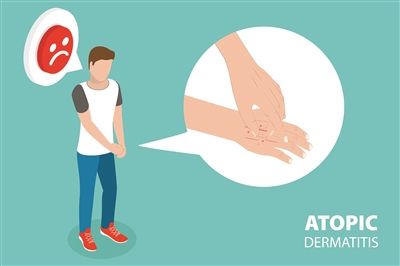
Many people, especially teenagers, will have small blisters on their hands when the seasons change, accompanied by varying degrees of itching, and peeling after scratching. The condition is medically known as sweat herpes and is one of the common dermatological diseases.
Sweaty herpes is a type of eczema that often occurs symmetrically on the lateral margins of the fingers or toes, and can also be seen on the palms and soles. Because it occurs in the hands and feet where the sweat glands are developed, blisters are the main manifestation, so it is called sweat herpes. The blisters are clear and transparent at first, and gradually become cloudy. After a week, they can be absorbed and subsided by themselves. After drying, they form molting, revealing the underlying pink new skin, which consciously itches.
There are many etiologies, which are considered to be related to individual physical autonomic dysfunction, mental factors, etc. It often occurs in the changing seasons such as the turn of spring and summer and the turn of summer and autumn. The age ranges from a few years old to young people in their teens and twenties, and it often occurs on a regular basis every year after the first attack.
Sweat herpes not only affects the appearance, but also affects the patient’s life because of itching. In severe cases, it can also cause secondary infection, swelling and pain in the skin of the hands and feet. Therefore, people with sweaty hands and feet should pay attention to keeping their hands and feet clean and fresh every day, and dry the sweat in time. If there are blisters, don’t pick them up by yourself, you can use topical preparations such as zinc oxide liniments that are astringent and antiperspirant. Do not tear off the molted skin of the ruptured part of the blister to avoid secondary infection. If the hand and foot sweat is severe, you can consider subcutaneous injection of botulinum toxin to relieve the sweat.
Text/Zhao Dayu (Beijing Shijitan Hospital)